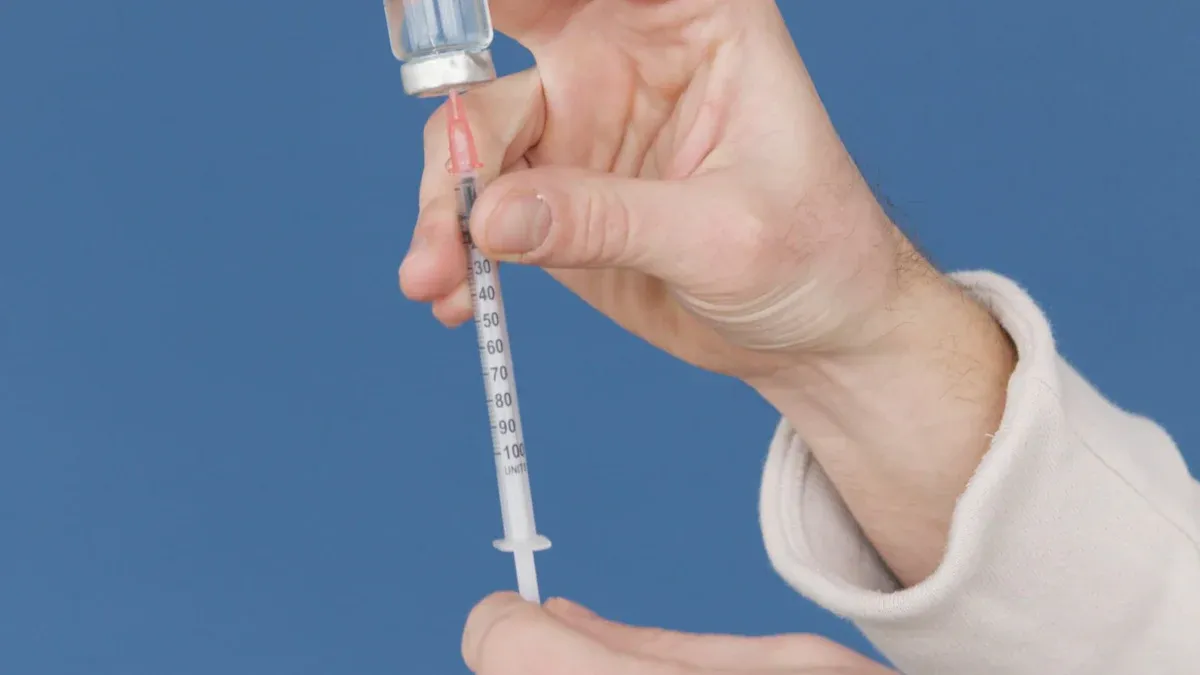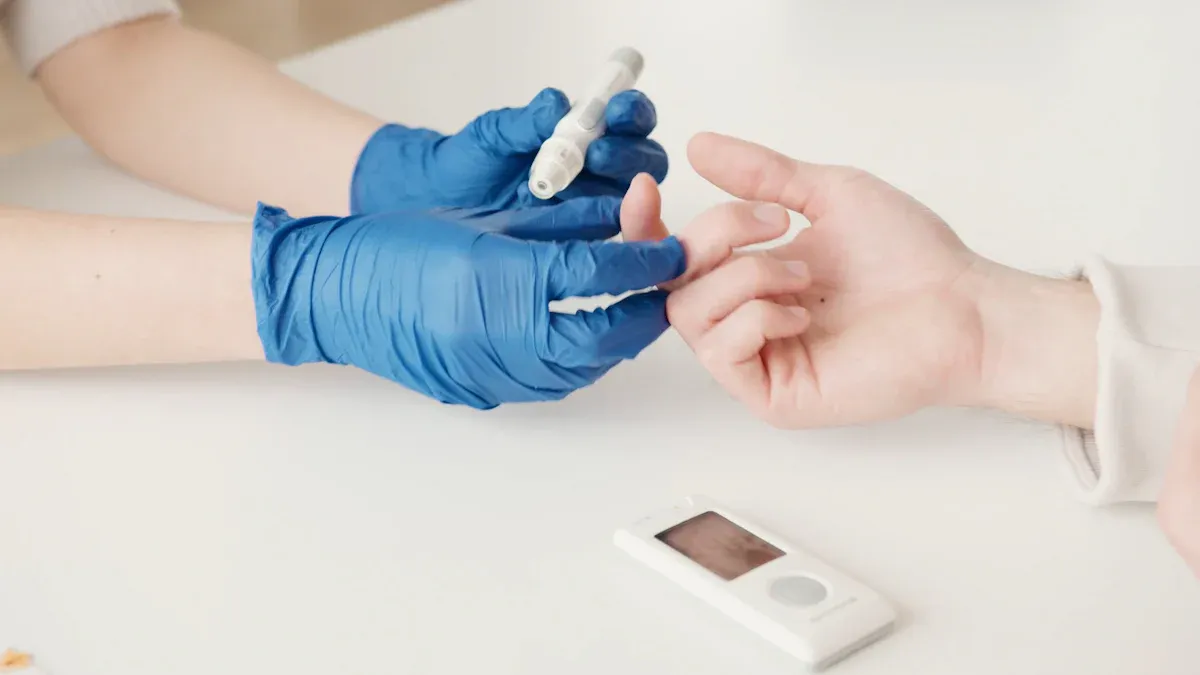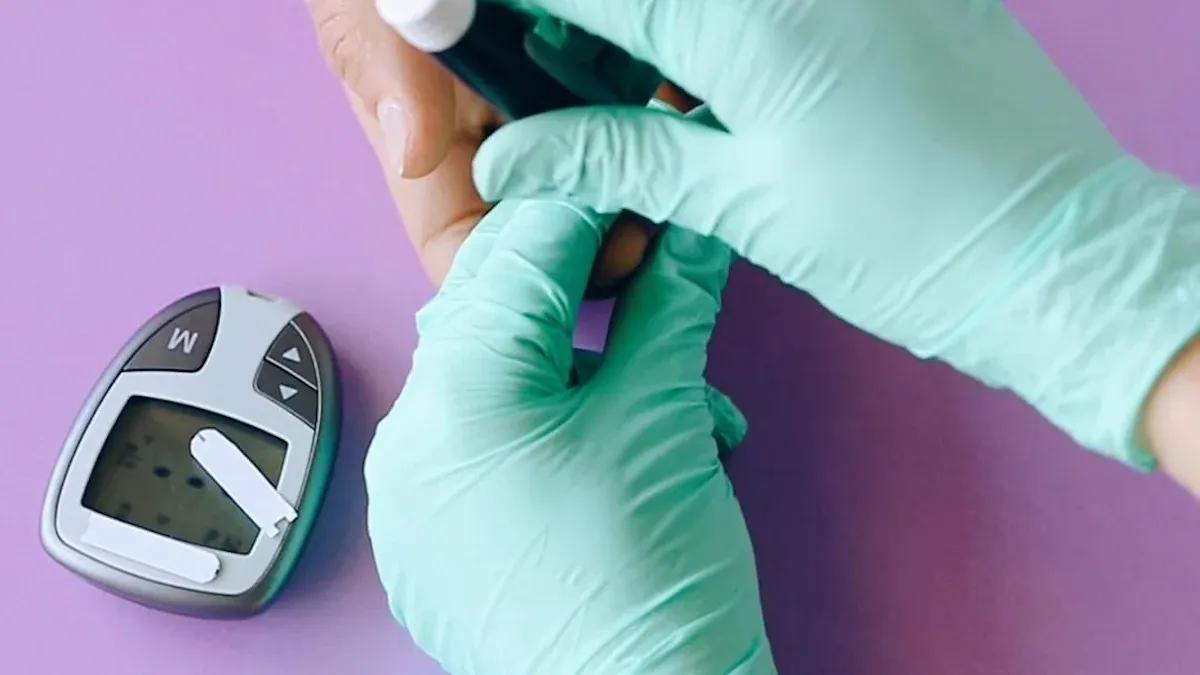What Is Insulinoma and Why It Matters

Insulioma is a rare tumor that forms in the pancreas and causes excessive insulin production. This overproduction leads to dangerously low blood sugar levels, which can affect your energy, focus, and overall health. Although insuliomas are the most common functioning pancreatic neuroendocrine tumors, they account for only 1% to 2% of all pancreatic tumors. Early detection is crucial because untreated insuliomas can result in severe complications. Recognizing symptoms and seeking timely medical care can help you manage this condition effectively and improve your quality of life.
Key Takeaways
Insulinoma is a rare growth in the pancreas. It makes too much insulin, causing very low blood sugar.
Knowing signs like confusion, dizziness, and fainting is important. Early detection helps manage insulinoma better.
Surgery works best to treat insulinoma. It often cures non-cancerous tumors.
Habits like smoking and drinking a lot of alcohol can raise the chance of getting insulinoma. Changing these habits can make you healthier.
Teaching people about insulinoma helps them spot symptoms early. This leads to quicker care and better health.
What Is Insulinoma?
Definition and Overview
Insulinoma is a tumor that develops in the pancreas, specifically from beta cells. These cells are responsible for producing insulin, a hormone that regulates blood sugar levels. Insulinomas belong to a group of functional pancreatic neuroendocrine tumors. Most insulinomas are benign, meaning they do not spread to other parts of the body. However, in rare cases, they can metastasize and become more serious. This condition causes an overproduction of insulin, leading to dangerously low blood sugar levels, also known as hypoglycemia. Understanding this tumor's nature is essential for recognizing its impact on your health.
How Insulinoma Affects the Body
When an insulinoma forms, it disrupts the balance of insulin in your body. Excessive insulin causes your blood sugar levels to drop below normal, which can result in symptoms like confusion, dizziness, and even fainting. Over time, repeated episodes of low blood sugar can harm your brain and other organs. You might notice difficulty concentrating, fatigue, or irritability. Severe cases can lead to seizures or loss of consciousness. By identifying these effects early, you can prevent long-term complications and maintain better control over your health.
Insulinoma as a Rare Condition
Insulinoma is an uncommon condition compared to other pancreatic disorders. It affects only 1-4 people per million annually, making it a rare diagnosis. Among all pancreatic tumors, insulinomas account for just 1%-2%. Despite their rarity, they are the most common type of functional pancreatic neuroendocrine tumor. This low incidence highlights the importance of raising awareness about insulinoma. Early detection can make a significant difference in managing the condition effectively.
Symptoms and Warning Signs

Common Symptoms of Insulinoma
Insulinoma often causes a range of symptoms due to its effect on blood sugar levels. You may experience both physical and mental changes. Common symptoms include:
Recurrent headaches
Lethargy or extreme tiredness
Blurred or double vision (diplopia)
Tremors or shaking (tremulousness)
Sweating (diaphoresis)
Palpitations or a racing heart (tachycardia)
Intense hunger
Anxiety or nervousness
Nausea
In more severe cases, you might notice confusion, behavioral changes, or even seizures. If left untreated, these symptoms can lead to coma or permanent neurological damage. Recognizing these signs early can help you seek timely medical care.
Recognizing Hypoglycemia
Hypoglycemia, or low blood sugar, is one of the hallmark effects of insulinoma. About 85% of individuals with this condition experience hypoglycemic symptoms. These symptoms often include blurred vision, weakness, and palpitations. You might also feel confused or notice abnormal behavior. In extreme cases, hypoglycemia can cause unconsciousness or seizures.
Doctors often use a set of criteria called Whipple’s triad to confirm hypoglycemia. This includes:
Symptoms of low blood sugar.
A plasma glucose level of 45 mg/dL or less.
Immediate relief of symptoms after consuming glucose.
If you notice these symptoms, it’s essential to address them quickly to avoid complications.
When to Seek Medical Attention
You should seek medical attention if you experience recurring symptoms of low blood sugar, such as confusion, tremors, or fainting. Persistent symptoms like blurred vision or behavioral changes also warrant a visit to your doctor. Severe episodes, such as seizures or loss of consciousness, require immediate emergency care. Early diagnosis and treatment can prevent long-term damage and improve your quality of life.
Tip: Keeping a record of your symptoms, including when they occur and how long they last, can help your doctor diagnose the condition more effectively.
Causes and Risk Factors
Causes of Insulinoma
The exact cause of insulinoma remains unclear, but several factors contribute to its development. These include genetic syndromes, lifestyle habits, and underlying health conditions. Below is a table summarizing the primary causes:
Cause | Description |
|---|---|
Genetic Syndromes | Conditions like MEN1 (Multiple Endocrine Neoplasia Type 1), VHL (Von Hippel-Lindau), NF1 (Neurofibromatosis Type 1), and tuberous sclerosis increase the risk of insulinomas. |
Age | |
Smoking | Increases the risk of developing pancreatic tumors. |
Alcohol | Heavy drinking is associated with a higher incidence of pancreatic neuroendocrine tumors (NETs). |
Diabetes | Individuals with diabetes have an increased risk of pancreatic NETs. |
Family History | A family history of cancer raises the risk of developing insulinomas. |
Other Factors | Specific DNA mutations in genetic syndromes contribute to the likelihood of developing NETs. |
Understanding these causes can help you identify potential risks and take preventive measures when possible.
Genetic and Environmental Factors
Genetics play a significant role in the development of insulinoma. If you have a family history of genetic syndromes like MEN1 or VHL, your risk increases. These conditions often involve mutations in specific genes that affect cell growth in the pancreas.
Environmental factors also contribute to insulinoma risk. Smoking and heavy alcohol consumption are linked to a higher likelihood of developing pancreatic tumors. These habits can damage pancreatic cells and disrupt normal hormone production. By addressing these factors, you can reduce your risk and improve your overall health.
Risk Factors for Insulinoma
Certain risk factors make you more likely to develop insulinoma. Age is one of the most significant. Most cases occur in individuals between 50 and 60 years old. A family history of cancer or genetic syndromes also increases your risk. Additionally, lifestyle choices like smoking and excessive alcohol use can raise the likelihood of developing pancreatic tumors.
If you have diabetes, your risk of pancreatic neuroendocrine tumors, including insulinoma, is higher. Monitoring your health and discussing these risks with your doctor can help you stay proactive. Early detection remains key to managing this rare condition effectively.
Diagnosis
Medical History and Physical Examination
Diagnosing insulinoma begins with your doctor reviewing your medical history and conducting a physical examination. They will ask about your symptoms, including episodes of confusion, fainting, or tremors, and whether these improve after eating. You may also be asked about your family history of genetic conditions like MEN1, which increases the risk of insulinoma. During the physical exam, your doctor will check for signs of low blood sugar, such as sweating or rapid heartbeat. This initial step helps guide further testing.
Blood Tests and Imaging Techniques
Blood tests play a crucial role in identifying insulinoma. Your doctor will measure glucose, insulin, and C-peptide levels. Low glucose combined with elevated insulin and C-peptide levels strongly suggests insulinoma. The table below summarizes key blood test findings:
Blood Test | Result Type |
|---|---|
Glucose levels | Low |
Insulin levels | Elevated |
C-peptide levels | Elevated |
Proinsulin levels | Potentially useful |
Imaging techniques help locate the tumor in your pancreas. Endoscopic ultrasound (EUS) is highly effective, with detection rates between 86.6% and 92.3%. Combining EUS with CT scans improves accuracy. Advanced methods like 3 Tesla MRI with diffusion-weighted imaging (DWI) and volume perfusion CT (VPCT) provide even better results. These tools allow doctors to pinpoint the tumor’s location and plan treatment effectively.
Confirming the Diagnosis
To confirm insulinoma, doctors use specific criteria. These include blood glucose levels of ≤40 mg/dL, insulin levels of ≥3 µIU/mL, and elevated C-peptide levels (≥200 pmol/L). High proinsulin concentrations and low beta-hydroxybutyrate levels also support the diagnosis. The table below outlines these criteria:
Criteria | Measurement |
|---|---|
Blood glucose | ≤40 mg/dL |
Insulin | ≥3 µIU/mL |
C-peptide levels | ≥200 pmol/L |
High proinsulin concentration | Present |
Beta-hydroxybutyrate levels | ≤2.7 mmol/L |
Meeting these criteria confirms the presence of insulinoma, ensuring you receive the appropriate treatment.
Treatment Options

Surgical Removal
Surgery is the most effective treatment for insulinoma. It involves removing the tumor from your pancreas, which restores normal insulin production. The success rate for surgical removal is high. About 87.5% of patients with benign tumors are considered cured, meaning they remain symptom-free for at least six months after surgery. The 10-year survival rate for these patients is approximately 88%.
Different surgical techniques are available depending on the tumor's location and size. Common procedures include:
Enucleation: Used in 56% of cases, this technique removes the tumor while preserving most of the pancreas.
Distal pancreatectomy: Performed in 31.5% of cases, it removes the tumor along with the tail of the pancreas.
Whipple procedure: A more complex surgery used in 2.9% of cases.
The surgical mortality rate ranges from 0% to 4%, and major complications occur in less than 20% of cases. Discussing these options with your doctor helps determine the best approach for your condition.
Medications and Blood Sugar Management
If surgery isn’t an option, medications can help manage insulinoma. Diazoxide is the primary drug used to control blood sugar levels. It works by inhibiting insulin release from the tumor and stimulating glycogen breakdown to increase blood sugar. However, side effects like fluid retention may require additional treatment with hydrochlorothiazide.
For malignant insulinomas, medical therapy focuses on preventing hypoglycemia and reducing tumor size. This approach ensures you maintain stable blood sugar levels and avoid severe symptoms.
Long-Term Monitoring and Follow-Up
After treatment, regular follow-up appointments are essential. Your doctor will schedule an initial visit within 2-6 weeks after discharge, followed by check-ups every 3-6 months. These visits include blood tests, symptom reviews, and physical exams to monitor your recovery.
A multidisciplinary team, including endocrinologists, surgeons, and oncologists, often oversees your care. This comprehensive approach ensures early detection of complications or recurrence. Adhering to your follow-up schedule helps maintain your health and provides personalized care based on your needs.
Note: Consistent follow-up is crucial for long-term success. Missing appointments may delay the detection of potential issues.
Why Insulinoma Matters
Health Impacts of Insulinoma
Insulinoma can significantly affect your health if left untreated. The excessive insulin production caused by this tumor leads to frequent episodes of hypoglycemia. These episodes can disrupt your daily life, making it hard to focus or complete tasks. Over time, repeated low blood sugar levels may damage your brain and other vital organs. You might experience memory problems, difficulty concentrating, or even permanent neurological issues.
The physical symptoms, such as fatigue, tremors, and fainting, can also limit your ability to work or enjoy activities. Severe cases may result in life-threatening complications like seizures or coma. By understanding these impacts, you can take steps to protect your health and seek treatment early.
Importance of Early Detection
Detecting insulinoma early can make a big difference in your treatment outcomes. Early diagnosis allows doctors to manage the condition before it causes severe complications. For example, identifying the tumor early increases the chances of successful surgical removal. This procedure often cures the condition and restores normal insulin levels.
You can improve your chances of early detection by paying attention to warning signs like frequent dizziness, confusion, or fainting. Keeping a record of your symptoms and discussing them with your doctor can help pinpoint the problem sooner. Early action not only improves your quality of life but also reduces the risk of long-term damage.
Tip: Regular check-ups and blood tests can help catch insulinoma before it progresses.
Raising Awareness About Rare Conditions
Although insulinoma is rare, raising awareness about it is crucial. Many people may not recognize the symptoms or understand the seriousness of this condition. By sharing information, you can help others identify potential warning signs and encourage them to seek medical advice.
Healthcare providers also benefit from increased awareness. It helps them consider insulinoma as a possible diagnosis when patients present with unexplained hypoglycemia. Greater awareness can lead to earlier diagnoses, better treatment outcomes, and improved research funding for rare conditions like this one.
Call to Action: Share this information with friends and family to spread awareness about insulinoma and its impacts.
Insulinoma is a rare but impactful condition that demands attention. You’ve learned about its definition, symptoms, causes, diagnosis, and treatment options. Recognizing early warning signs like frequent dizziness or fainting can help you seek timely medical care and avoid severe complications.
Remember: Early detection can save lives and improve outcomes.
By sharing this information, you can help others understand insulinoma and encourage them to take action. Raising awareness about rare conditions like this one makes a difference in improving health outcomes for everyone.
FAQ
What is the main cause of insulinoma?
Insulinoma develops when beta cells in your pancreas grow abnormally and form a tumor. While the exact cause remains unclear, genetic syndromes like MEN1 or environmental factors such as smoking and heavy alcohol use can increase your risk.
Can insulinoma be life-threatening?
Yes, untreated insulinoma can lead to severe hypoglycemia, which may cause seizures, coma, or even death. Early diagnosis and treatment significantly reduce these risks and improve your quality of life.
How is insulinoma different from diabetes?
Insulinoma causes excessive insulin production, leading to low blood sugar (hypoglycemia). Diabetes, on the other hand, often involves insufficient insulin or insulin resistance, resulting in high blood sugar (hyperglycemia). Both conditions affect blood sugar but in opposite ways.
Is insulinoma always treated with surgery?
Surgery is the most effective treatment for insulinoma. However, if surgery isn’t possible, medications like diazoxide can help manage blood sugar levels. Your doctor will recommend the best approach based on your condition.
Can insulinoma recur after treatment?
Recurrence is rare, especially if the tumor is benign and completely removed. Regular follow-ups and monitoring help detect any potential recurrence early, ensuring timely intervention if needed.
Tip: Keep attending your follow-up appointments to maintain long-term health after treatment.
---
ℹ️ Explore more: Read our Comprehensive Guide to All Known Cancer Types for symptoms, causes, and treatments.
See Also
Understanding Adamantinoma: Its Impact on The Human Body
Essential Information About Carcinoid Tumors You Need
Key Features of Craniopharyngioma You Should Understand
